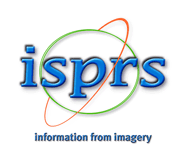Assessing Walkability in Sofia: A Multi-Metric Index for Pedestrian-Friendly Cities
Keywords: Pedestrian Accessibility, Pedestrian-Friendly Environment, Street Connectivity, Urban Proximity, Walkability Index
Abstract. Despite the growing interest in urban walkability, a significant gap remains in assessing pedestrian accessibility at the neighbourhood level in Sofia, Bulgaria. This study aims to bridge this gap by developing a comprehensive walkability index tailored to Sofia’s urban environment. The index is constructed using ten key metrics that reflect six core aspects of pedestrian experience: connectivity, convenience, comfort, conviviality, coexistence, and commitment. The methodology employs geospatial analysis and computational modelling implemented in Python, leveraging libraries such as GeoPandas, Shapely, and NetworkX. The study assesses street connectivity using a link-to-node ratio, public transport coverage via shortest-path analysis, and network integration through the Pedestrian Route Directness Indicator (PRDI). Land use mix is evaluated using entropy-based calculations, while residential density considers household distribution within the built environment. Essential activities, pedestrian infrastructure, and convivial points are analysed based on proximity and spatial coverage. Traffic conditions are quantified through lane density, and the pedestrian-friendly network is assessed by mapping designated pedestrian-prioritized areas.
Results reveal spatial disparities in walkability across Sofia’s neighbourhoods, with variations influenced by infrastructure availability, land use diversity, and traffic conditions. By visualizing normalized scores, the study identifies areas with inadequate pedestrian conditions, providing a framework for targeted infrastructure improvements. The findings contribute to urban planning by offering actionable insights to enhance pedestrian accessibility and promote sustainable mobility. This methodology is adaptable to other urban contexts, further advancing walkability research and policy development.





